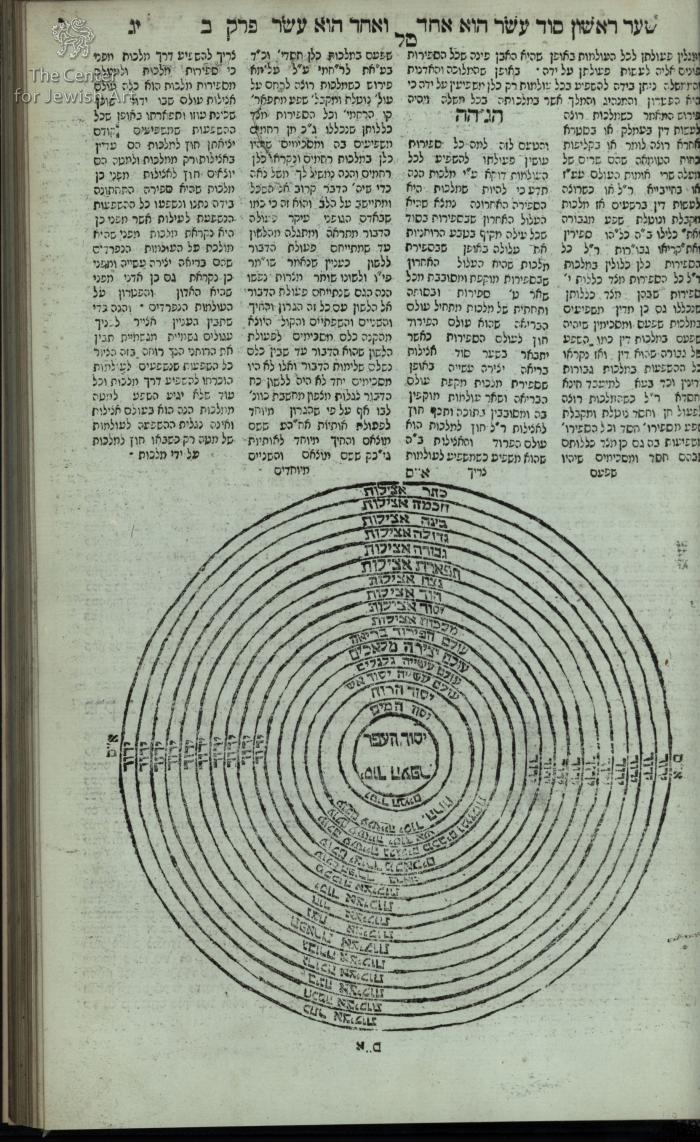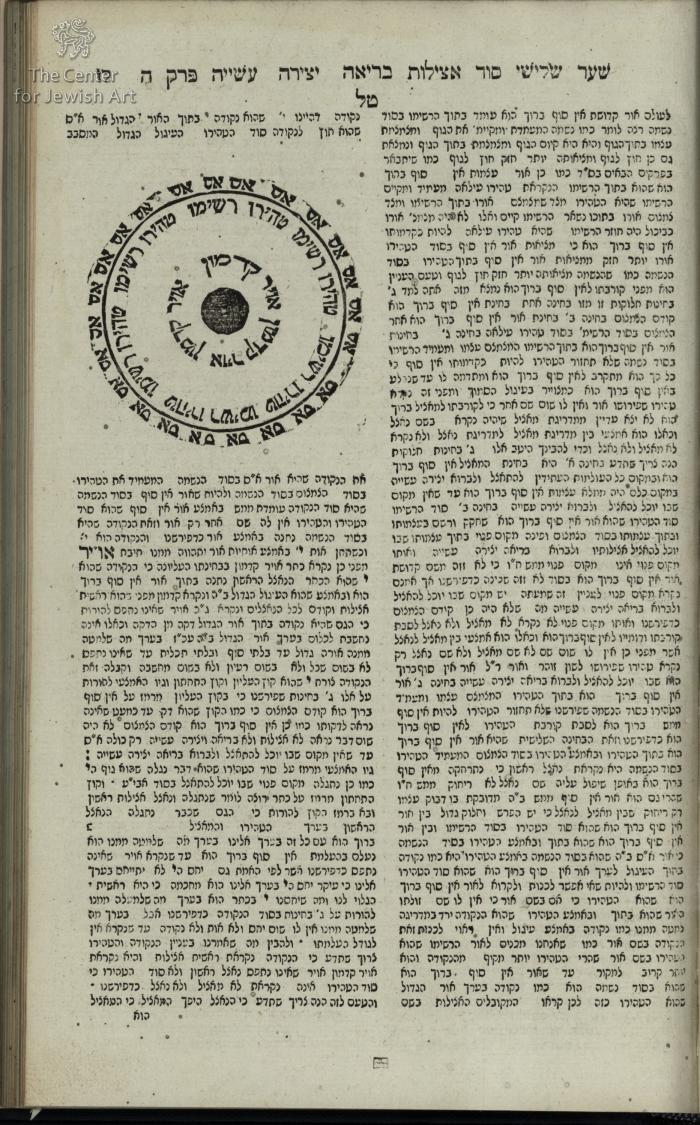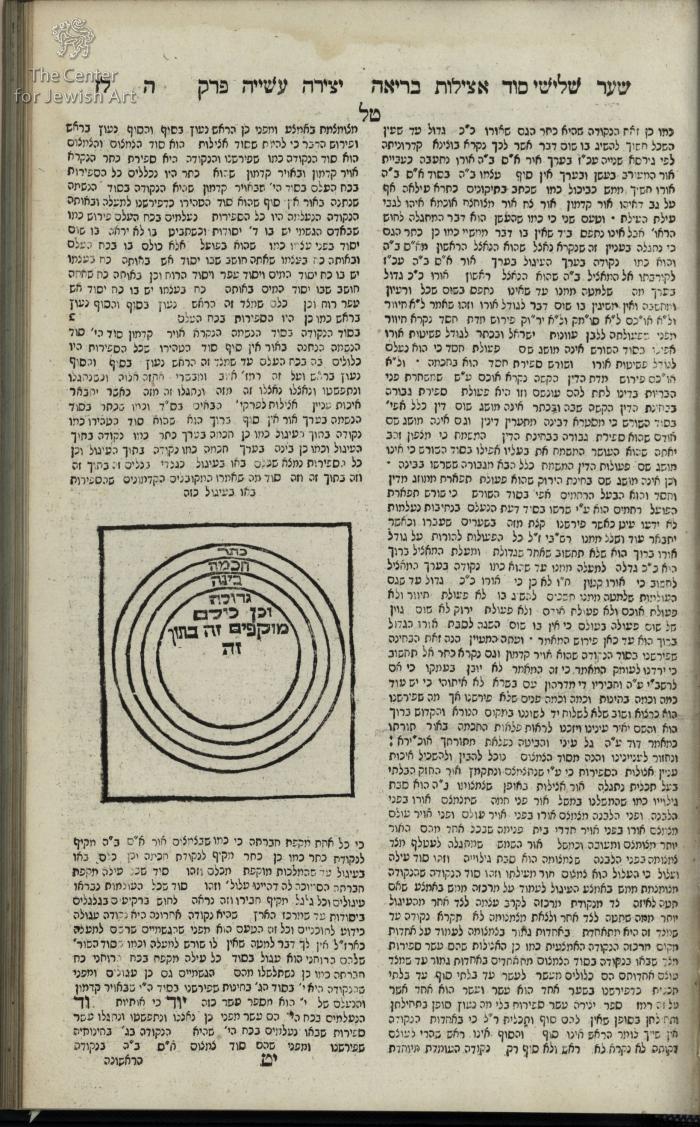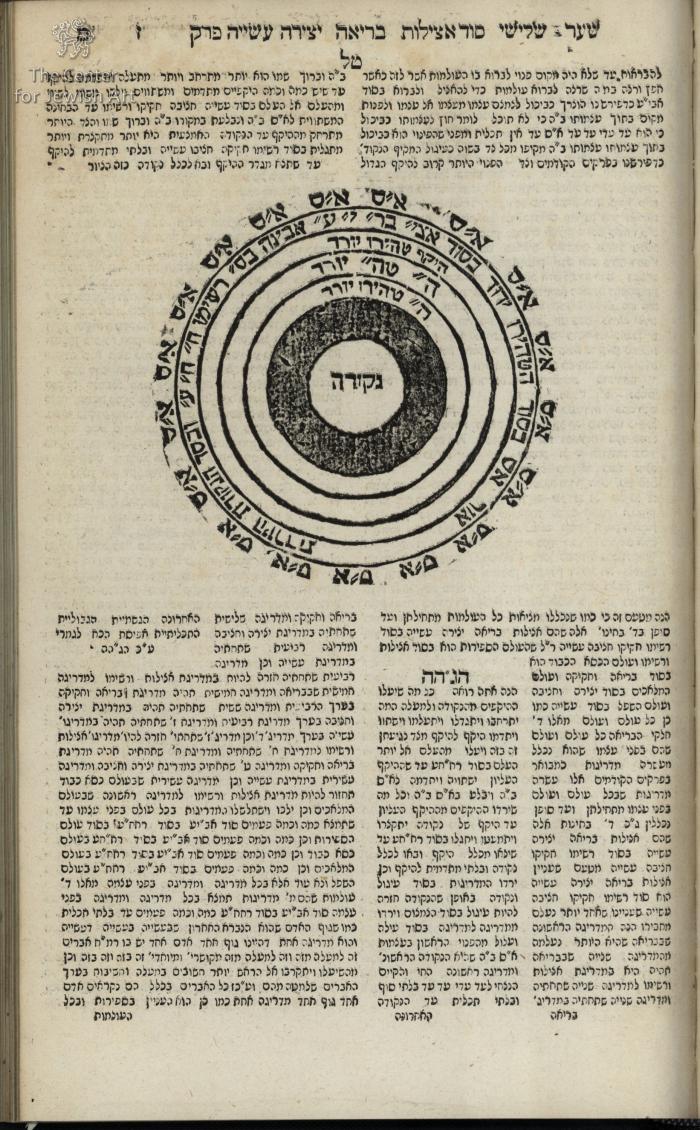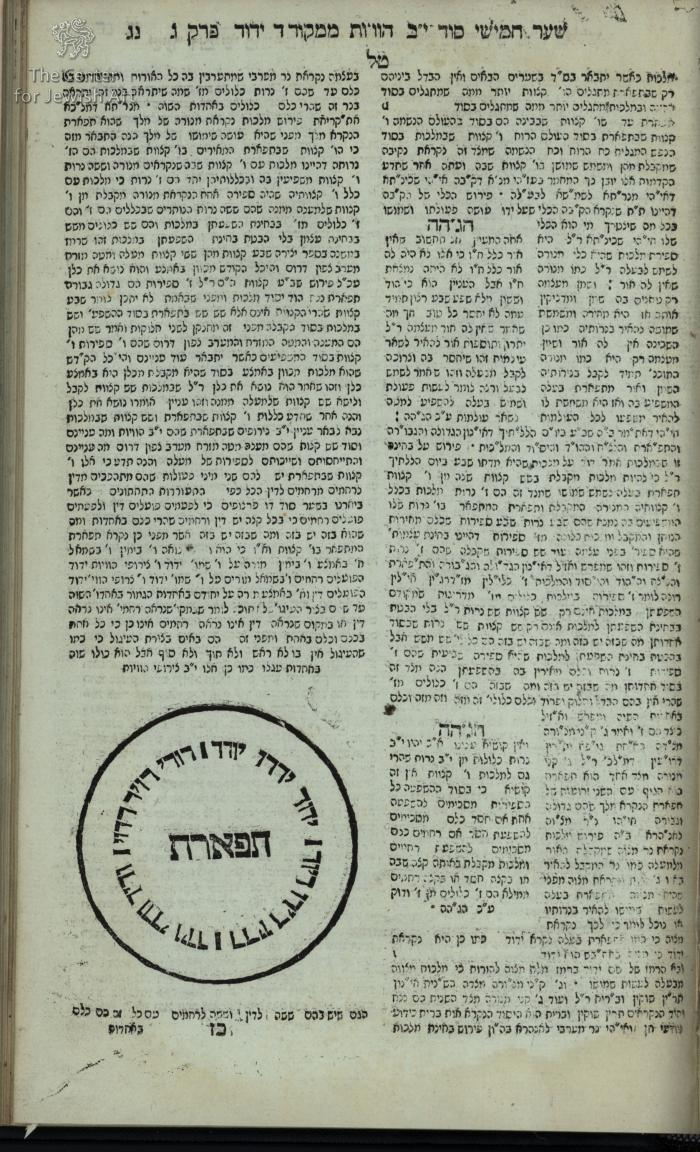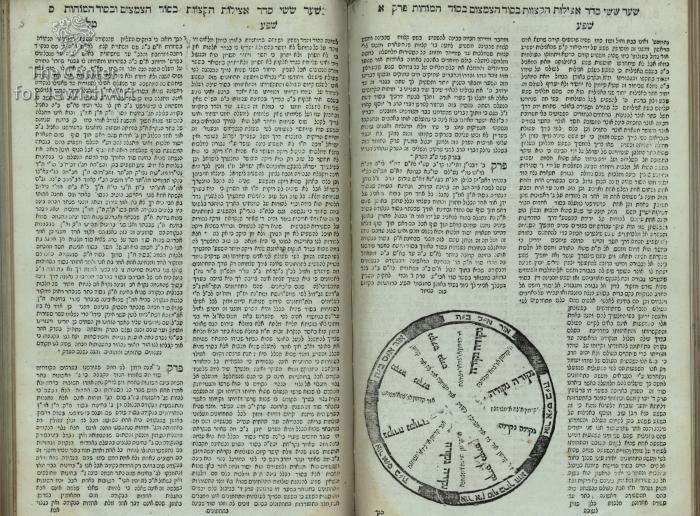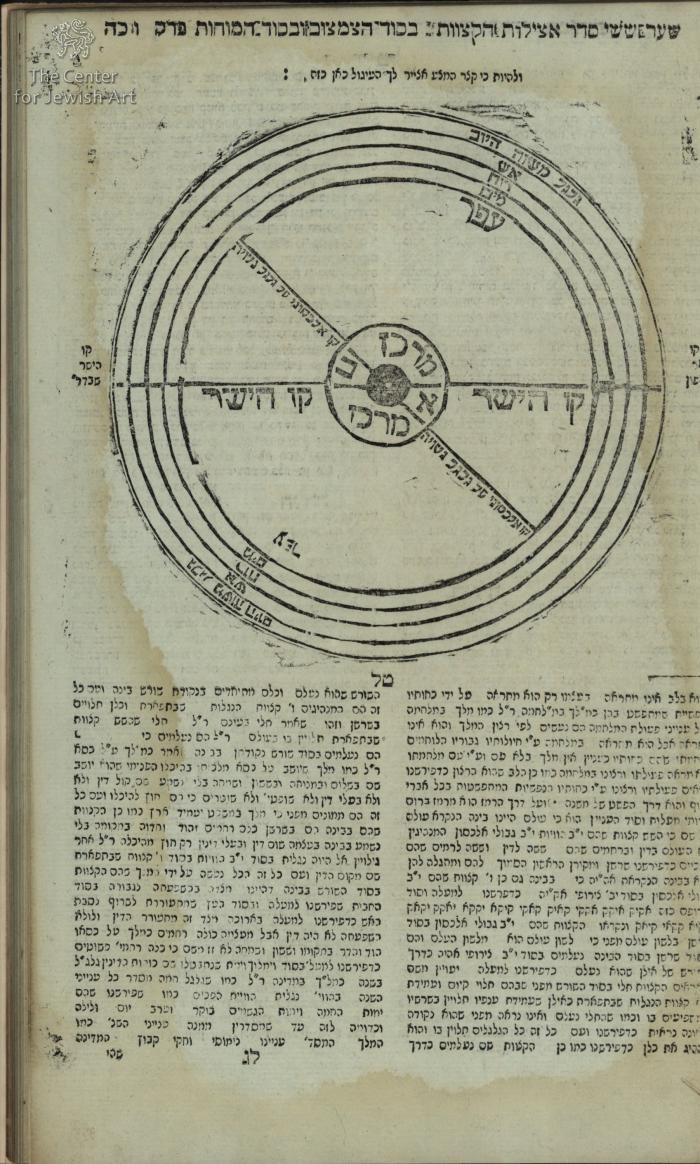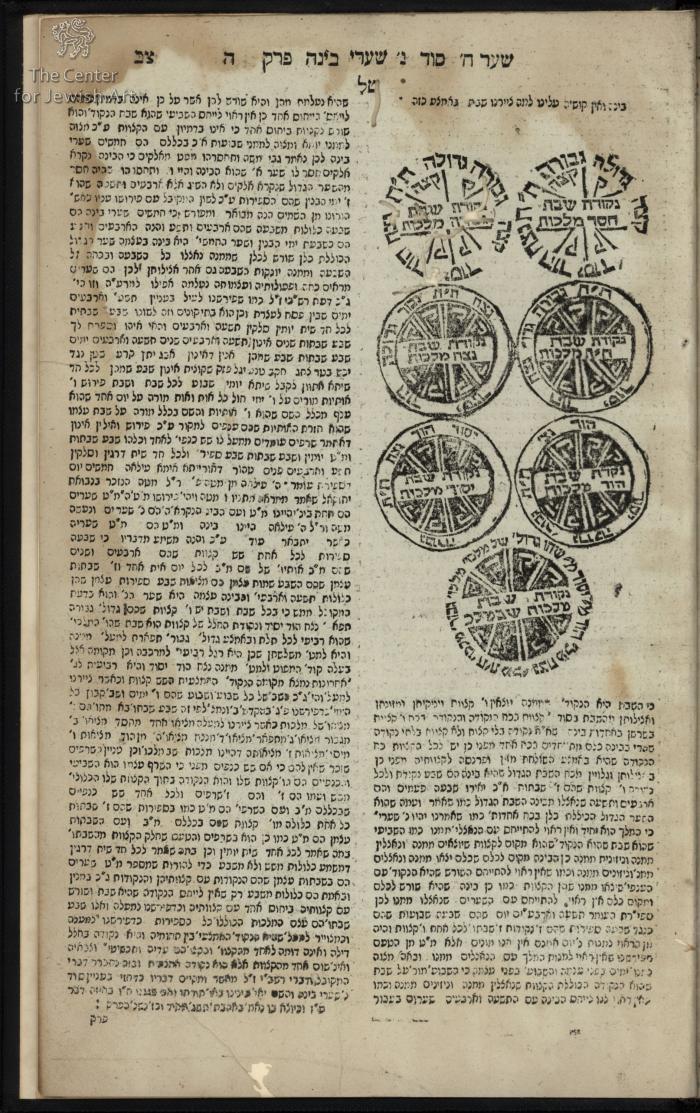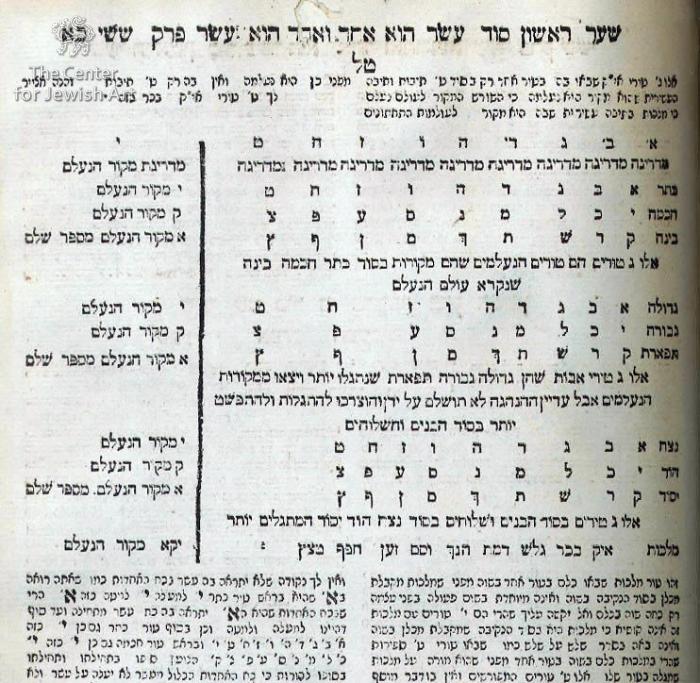Obj. ID: 35979 Shefa' Tal by Shabbtai Sheftel ben Akiva Horowitz, Belozerki, 1807

sub-set tree:
This text was prepared by William Gross:
An important and popular introductory work on Kabbalah.
The work is organized as a commentary on the Iggeret ha-Te’amim of R. Aaron Abraham ben Barukh Simeon ha-Levy (16th C). Shefa is a brief commentary that explains allusions. Tal is a detailed explication of esoteric and concealed concepts.
Shabbtai Sheftel Horowitz (1565–1619) was a Kabbalistic author born in Prague, who flourished in the sixteenth and seventeenth centuries. A physician by profession, he was a was a strong advocate of Kabbalah, and sought to make this esoteric wisdom available to others who might not otherwise have access to it. His work was one of the first on kabbalah printed in Western Europe, and included many approbations by leading Torah scholars, including: Rabbi Shlomo Efraim Luntshitz, Rabbi of Prague, author of Kli Yakar and Rabbi Yeshaya Horowitz author of Shnei Luchot Ha-Brit (Shla).






